Posts Tagged: green metallic sweat bee
'Bee a Scientist' on May 8
Get ready! It's almost time to count the pollinators! The University of California's Agriculture and Natural Resources (UC ANR) wants you set aside...
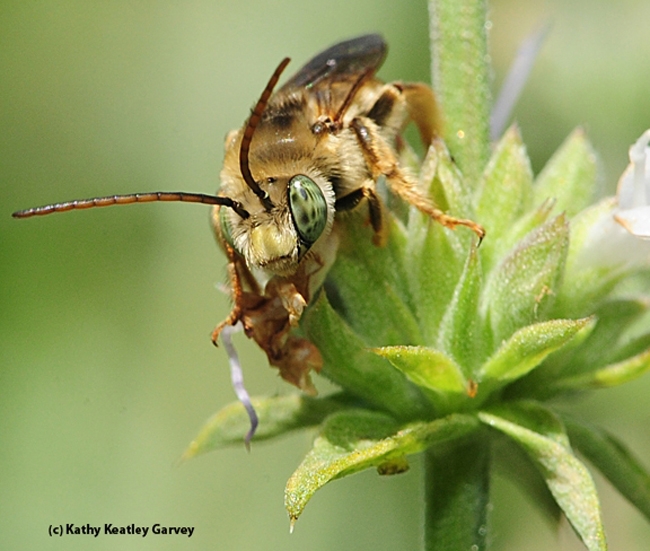
A male longhorned bee, Melissodes communis, as identified by native pollinator specialist Robbin Thorp, emeritus professor of entomology at UC Davis. (Photo by Kathy Keatley Garvey)
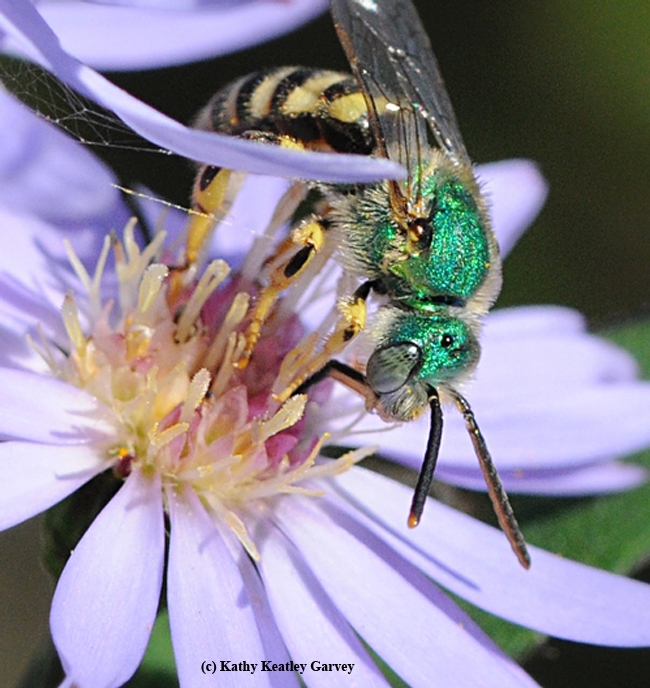
A male green metallic sweat bee Agapostemon texanus. (Photo by Kathy Keatley Garvey)
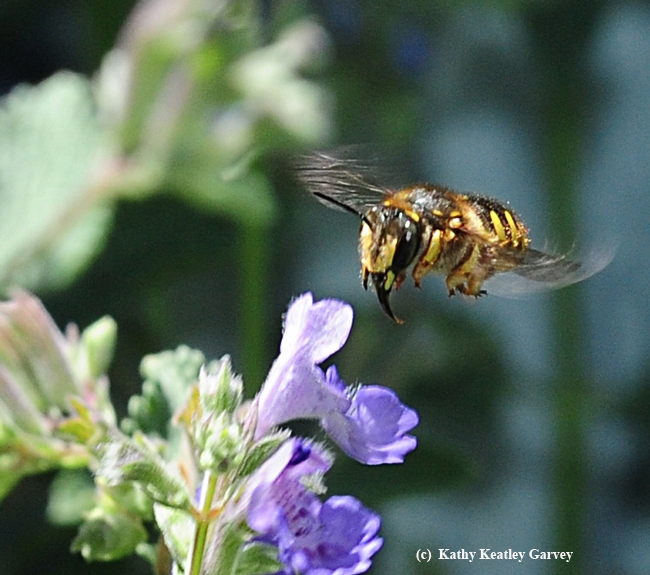
European wool carder bee, Anthidium manicatum, in flight. (Photo by Kathy Keatley Garvey)
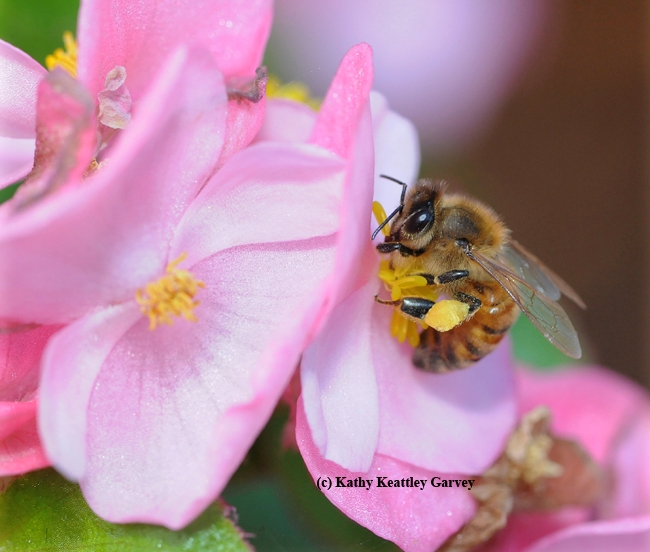
Honey bee, Apis mellifera, on a begonia. (Photo by Kathy Keatley Garvey)
It's All About the Community
If you like community gardens, then you'll want to visit the Avant Garden at the corner of First and D streets in Benicia. The Benicia Community...
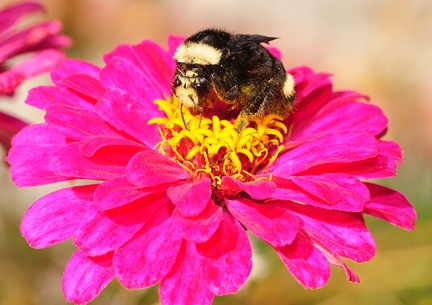
A yellow-faced bumble bee on a zinnia. (Photo by Kathy Keatley Garvey)
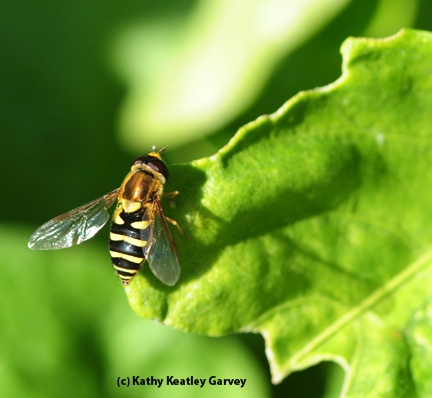
A hover fly, aka flower fly or syrphid fly, soaking up sunshine. (Photo by Kathy Keatley Garvey)
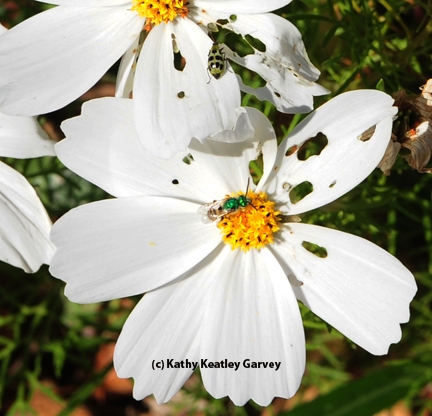
A spotted cucumber beetle and a green metallic sweat bee sharing a cosmos. (Photo by Kathy Keatley Garvey)
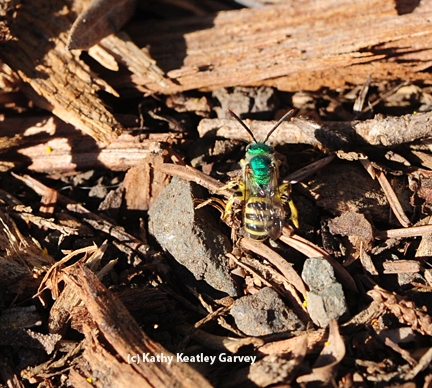
Close-up of a male green metallic sweat bee. (Photo by Kathy Keatley Garvey)
Just bee-cause
It's National Pollinator Week. Have you hugged your pollinators today, particularly the bees?
If you don't pay attention to the bees around you, you may think that every floral visitor is a honey bee (Apis mellifera) or a bumble bee (Bombus).
Not!
If you look closely, you'll see bee diversity: leafcutter bees, green metallic sweat bees, cuckoo bees, long-horned bees, carpenter bees, and squash bees, just to name a few.
Native pollinator specialist Robbin Thorp, UC Davis emeritus professor of entomology, has detected 80 different species of bees - and counting - in the Häagen-Dazs Honey Bee Haven on Bee Biology Road at UC Davis. The half-acre garden, planted in the fall of 2009, is located next to the Harry H. Laidlaw Jr. Honey Bee Research Facility. It's intended to be a year-around food source for the Laidlaw bees and other pollinators, to raise public awareness about the plight of bees, and to demonstrate what you can plant in your own garden.
"Of about 4,000 bee species known in the entire United States, about 1,600 have been recorded in California," according to Gordon Frankie of UC Berkeley, Robbin Thorp and their colleagues, in a must-read article in California Agriculture.
They point out: "...many types of urban residential gardens provide floral and nesting resources for the reproduction and survival of bees, especially a diversity of native bees. Habitat gardening for bees, using targeted ornamental plants, can predictably increase bee diversity and abundance, and provide clear pollination benefits."
Be sure to check out UC Berkeley's Urban Bee Gardens website that's described as "a practical guide to introducing the world’s most prolific pollinators into your garden." It's an educational treasure.
Bottom line: It's good to bee-aware, especially when research studies show that our pollinator population is declining worldwide.
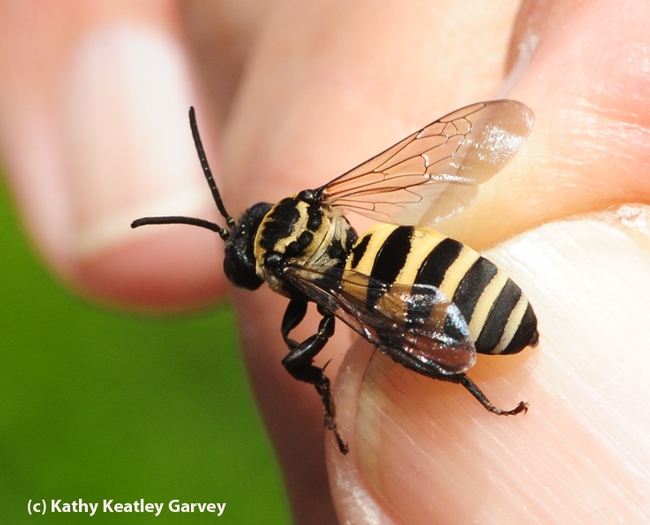
A male cuckoo bee, Triepeolus concavus, the cuckoo that is a cleptoparasite on Svastra, according to Robbin Thorp. (Photo by Kathy Keatley Garvey)
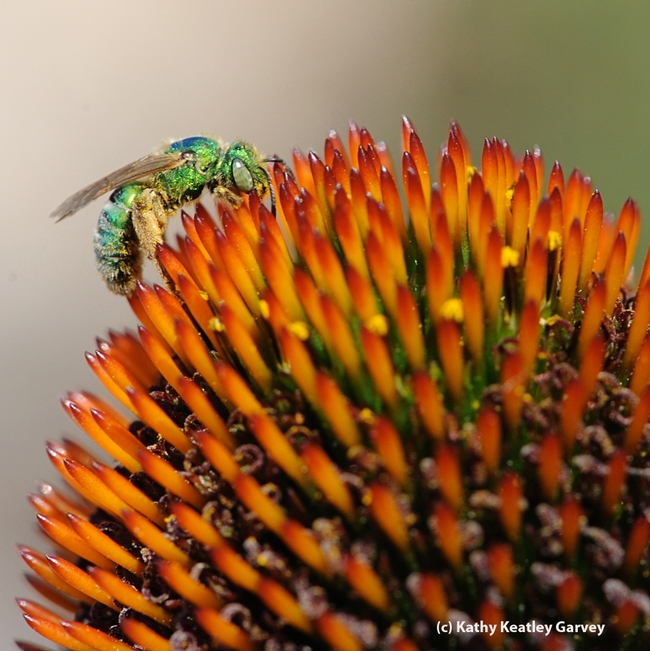
Female metallic green sweat bee, Agapostemon texanus. (Photo by Kathy Keatley Garvey)
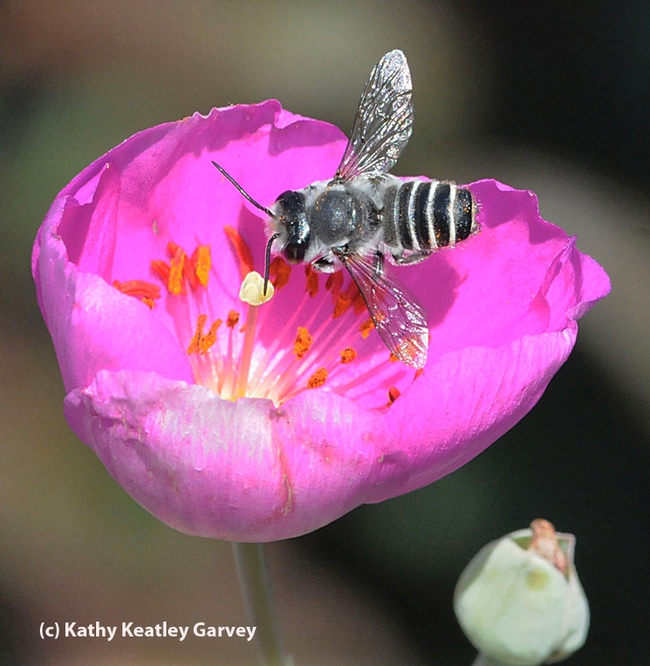
A male leafcutting bee, Megachile sp., on rock purslane. (Photo by Kathy Keatley Garvey)
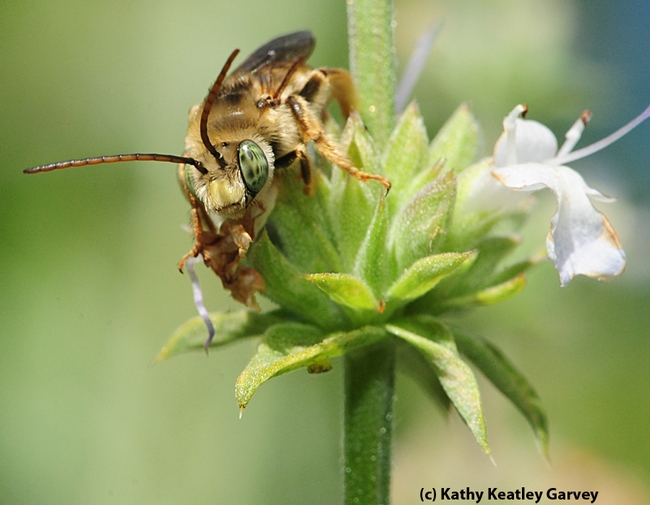
A male long-horned bee, Melissodes communis, on salvia. (Photo by Kathy Keatley Garvey)
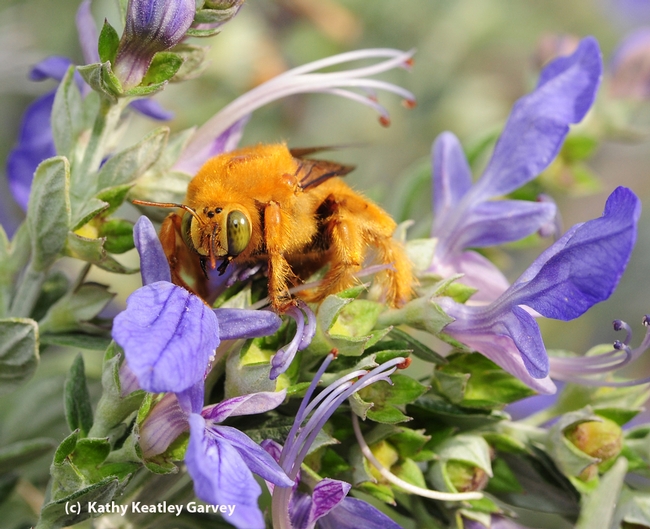
A male Valley carpenter bee, Xylocopa varipuncta. (Photo by Kathy Keatley Garvey)
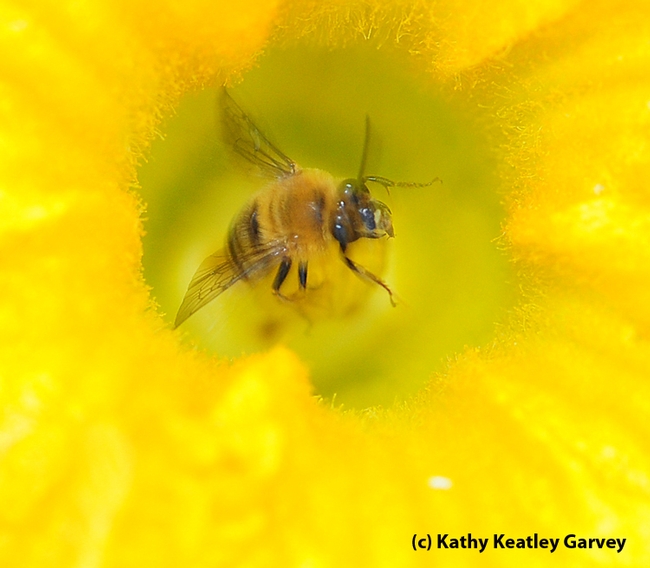
Male squash bee, Peponapis pruinosa. (Photo by Kathy Keatley Garvey)
Something Quite Magical
There's something so magical and captivating about the metallic green sweat bee.Shouldn't it be yellow? No.Is it a bee? Yes.Does it attract...

Green Metallic Sweat Bee

Going Up

The Eyes Have It

